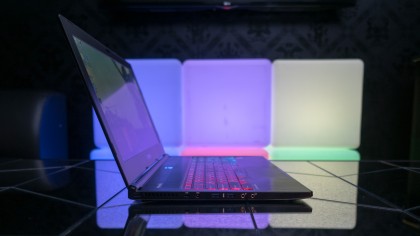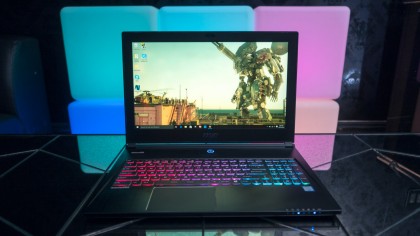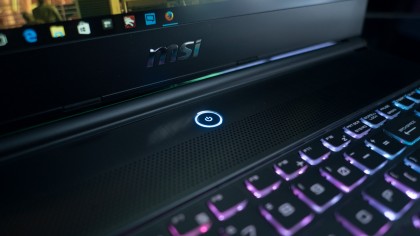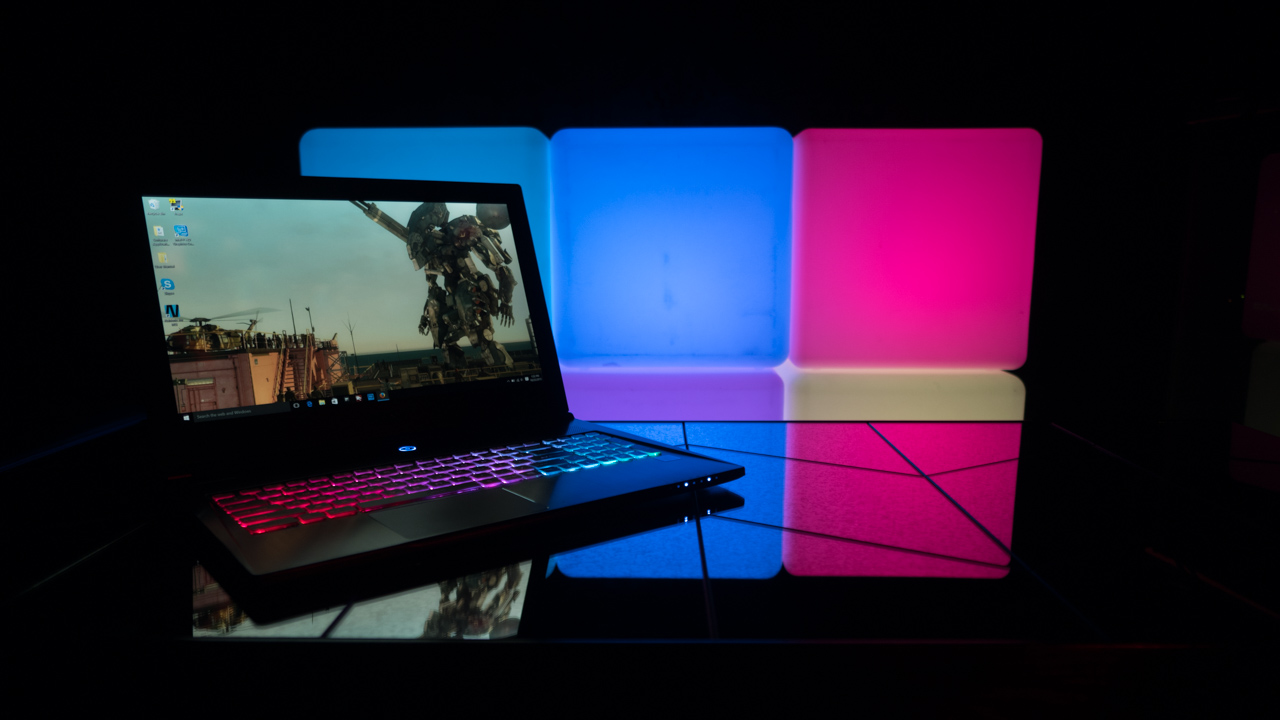Why you can trust TechRadar
MSI's latest version of the GS60 measures in at 15.35 x 10.47 x 0.78 inches (389 x 265 x 19.8mm) and weighs 4.2 pounds (1.82kg). By comparison, the model with a 3K display we reviewed last year tipped the scales at 4.36 pounds and sported 16.5 x 11.3 x 0.85-inch dimensions.
As for its competitors, the Asus ROG G501 weighs a bit more at 4.54 pounds (2.05 kg) but has very similar 15.08 x 10.04 x 0.81 inch (383 x 255 x 20.5mm) dimensions. Bogged down by an optical drive, the Gigabyte P55K v4 is an even more portly machine that weighs 5.51 pounds (2.5kg). The P55K v4's built-in DVD reader also ends up making it thicker as well, measuring 14.96 x 10.59 x 1.34 inches (380 x 269 x 34mm) overall.

Here is the MSI GS60 Ghost Pro configuration sent to techradar for review:
Spec Sheet
- CPU: 2.6GHz Intel Core i7 6700HQ (quad-core, 6MB cache, up to 3.5GHz with Turbo Boost)
- Graphics: NVIDIA GeForce GTX 970M (3GB GDDR5 RAM), Intel HD Graphics 530
- RAM: 16GB DDR4
- Screen: 15.6-inch, 1,920 x 1,080 eDP Wide View Angle
- Storage: 128GB NVMe M.2 SSD by PCIe Gen3x4; 1TB HDD (7,200 rpm)
- Ports: 2 x USB 3.0 ports, 1 x USB Type-C with Thunderbolt 3.0, mini DisplayPort, HDMI, SD card reader, Ethernet, headphone jack, microphone jack
- Connectivity: Killer N1525 Combo (2 x 2 AC) Wi-Fi; Bluetooth 4.1
- Camera: FHD type (30fps, 1080p)
- Weight: 4.2 pounds
- Size: 15.35 x 10.47 x 0.78 inches (W x D x H)

Priced at $1,699 (£1,388, AU$2,699), this version of the MSI GS60 Ghost Pro comes with all the trappings of a modern gaming laptop including Skylake processors, Nvidia Maxwell graphics and DDR4 RAM. The only thing you might find lacking is the 128GB SSD, but thankfully, MSI makes it easy to swap out components with easily removable body panels.
There's also a higher-end model that comes with double the solid state storage space and video memory as well as a 4K screen for $1,899 (£1,579, AU$2,899). Forking over an extra 200 smackers for these impressive upgrades might be tempting, but I would resist the siren call of Ultra-HD gaming. Playing games at a 4K resolution is still simply too much for most gaming laptops to handle even in 2015, unless they come packing the power of two discrete graphics chips.

Speaking of mobile rigs not ready for 4K gaming, the Asus ROG G501 falls into this exact problem, because it only has an Nvidia GTX 960 graphics processor to drive a 3,840 x 2,160 resolution display. If it weren't for the 4K gaming laptop label, the G501 is an amazing deal that throws in a 512GB SSD and 16GB of RAM with an Intel Core i7 Haswell processor for just $1,699 or £1,499 (about AU$2,122).
The Gigabyte P55K v4 is the most budget-friendly option, priced at $1,250 (£1,049, AU$1799). While it comes with a lower-end Nvidia GTX 965M graphics card, it has a newer Intel Broadwell CPU. Gigabyte also offers a higher end P55W v4 model, which upgrades the video card to an Nvidia GTX 970M for $1,399 (£1,149, AU$2,099).
Sign up for breaking news, reviews, opinion, top tech deals, and more.
While the Gigabyte machine comes at a bargain for what is essentially the same exact configuration as the Ghost Pro, the GS60 is thinner and lighter with a full metal chassis. The Asus ROG G501, meanwhile, is the least fit machine for playing games – especially at that resolution – and should only be considered if gaming is a lower priority.

Kevin Lee was a former computing reporter at TechRadar. Kevin is now the SEO Updates Editor at IGN based in New York. He handles all of the best of tech buying guides while also dipping his hand in the entertainment and games evergreen content. Kevin has over eight years of experience in the tech and games publications with previous bylines at Polygon, PC World, and more. Outside of work, Kevin is major movie buff of cult and bad films. He also regularly plays flight & space sim and racing games. IRL he's a fan of archery, axe throwing, and board games.
